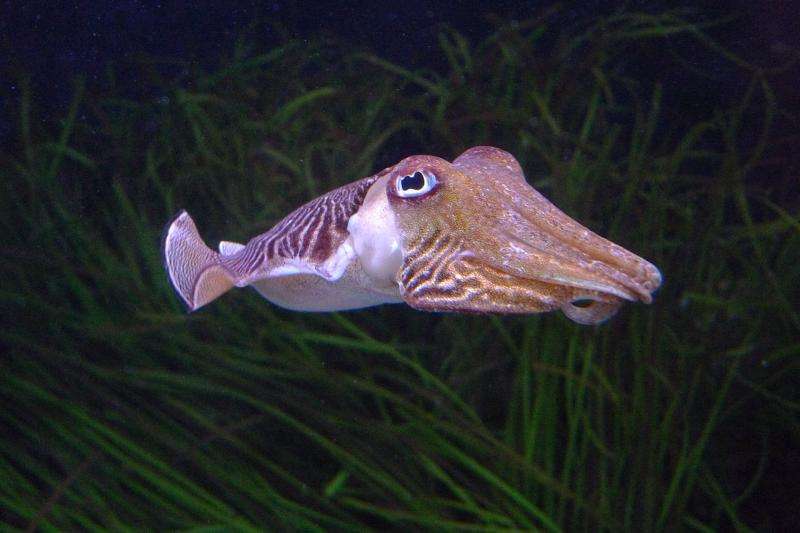Camouflaged cuttlefish employ electrical stealth

When you're as soft and delicious as a cuttlefish, evading predators is a full-time job.
Not only do these squid-like creatures employ stealthy visual camouflage when a predator looms nearby, new research shows they also manage to cloak their electrical fields.
One of the cuttlefish's major predators, the shark, has eyes on the side of its head, making it effectively blind straight ahead and near the front of the mouth. So the shark relies instead on a snout studded with sensitive detectors of faint electrical fields to get the meat in the maw.
Consequently, the common cuttlefish (Sepia officinalis) has figured out a stealth technology to protect itself in the electrical spectrum, according to Christine Bedore, an assistant professor of biology at Georgia Southern University who studied the phenomenon as a post-doctoral researcher in the Sönke Johnsen lab at Duke University.
Sharks can sense a faint current emanating from the tube-like siphons on either side of the cuttlefish's head, the vent where it excretes, and the gap around its mantle.
These "bioelectric fields" aren't anything like the 500 volts an electric eel produces. They're just a tiny electrical artifact of the ion exchanges caused by the animal's metabolic processes, like respiration. Still, Bedore's experiments showed the sharks will bite when they sense these subtle fields.
A common cuttlefish at rest has a bioelectric potential of 10-30 microvolts, Bedore found. That's about 75,000 times weaker than an AAA battery. But when the animal freezes in place, slows its ventilation, throws its arms around to cover the siphons and clamps down on its mantle, the current drops to about 6 microvolts.
Bedore measured these tiny electrical fields as captive-reared cuttlefish rested comfortably in a tank, and then as they responded to videos from an iPad next to the tank that depicted the dark and growing silhouettes of an approaching grouper, shark or crab.
For the fish and the shark, the cuttlefish froze, covered body openings with their arms and slowing breathing. The crab silhouette inspired no such response.
"There's a myth that sharks detect the electrical signals of your heartbeat," Bedore said. But skin and other tissues effectively mask those signals. Bedore found that the cuttlefish's arms over the siphons reduced the bioelectric field by as much as 89 percent.
In an experiment using real sharks and electrodes to simulate a cuttlefish at rest, both juvenile black tip sharks and adult bonnethead sharks responded by biting the equipment. But a simulation of the voltage from a cuttlefish's freezing response resulted in half as many chomps.
Should the freezing trick fail, the cuttlefish's last-ditch defense is to squirt a cloud of ink and jet away with a powerful blast from its mantle and siphons. But those actions create an electrical signal about four times greater than the resting field, Bedore found.
"Jetting would only be for use as a last resort," Bedore said. Indeed, the wild-caught Florida test-sharks were excited by the current from jetting and actually seemed attracted to the taste of the ink produced by common cuttlefish.
The study appears in the Dec. 2 edition of Proceedings of the Royal Society B.
More information: Freezing behaviour facilitates bioelectric crypsis in cuttlefish faced with predation risk, Proceedings of the Royal Society B: Biological Sciences, rspb.royalsocietypublishing.or … .1098/rspb.2015.1886
Journal information: Proceedings of the Royal Society B
Provided by Duke University



















